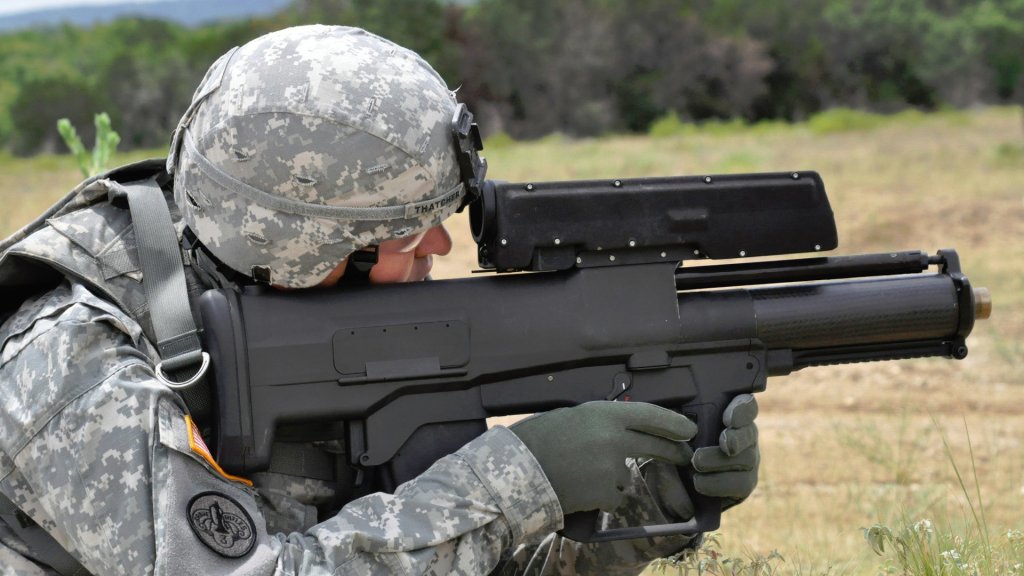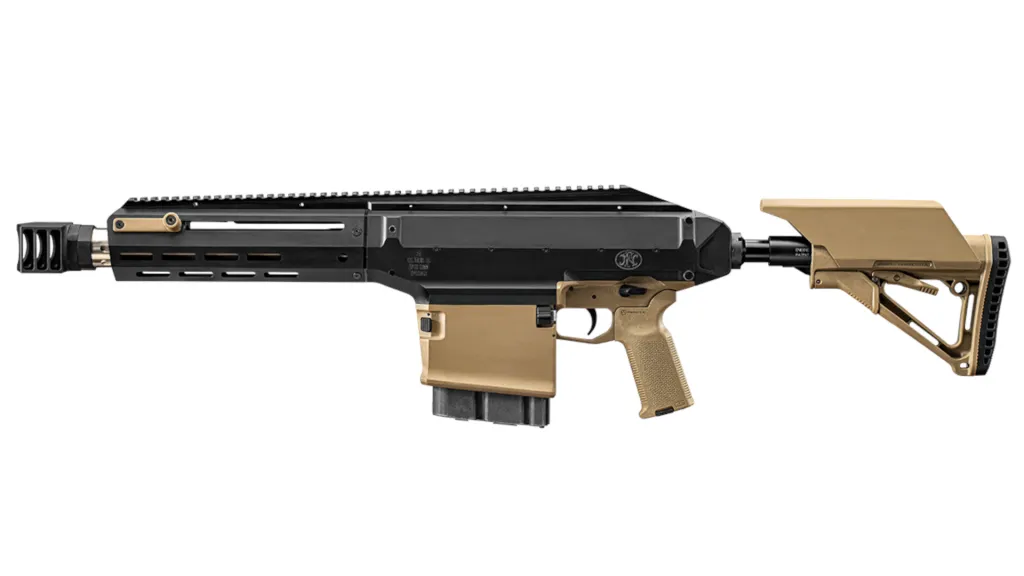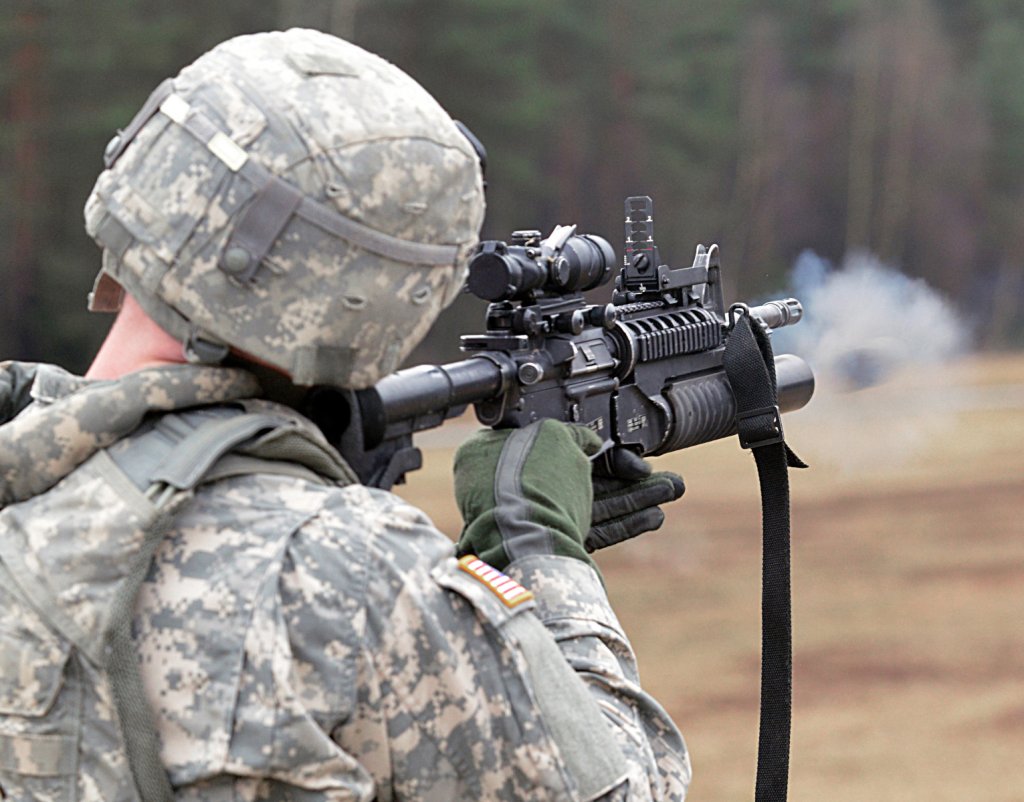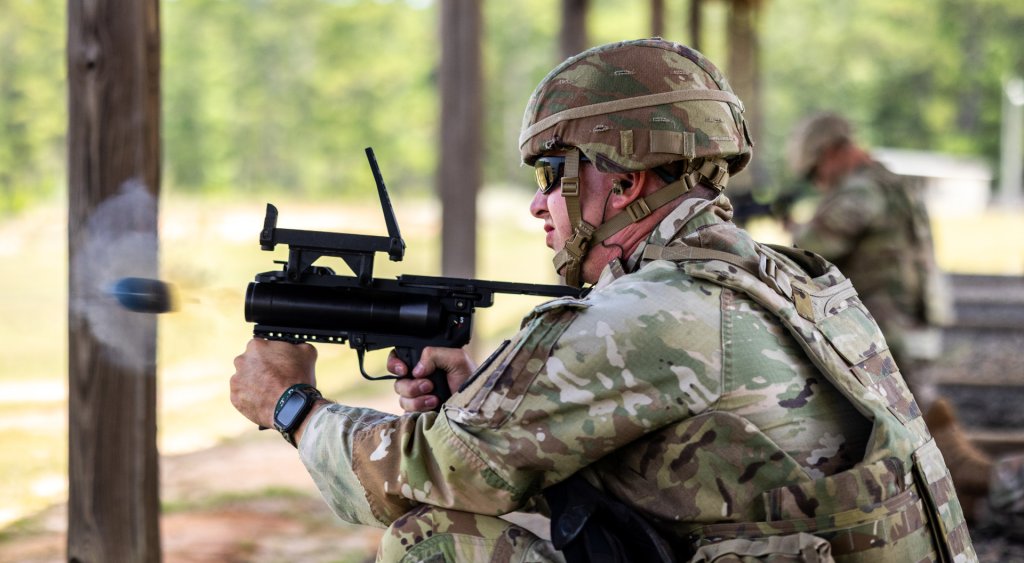New Northrop-Colt 25mm Grenade Launcher Builds On Lessons From Failed XM25 “Punisher”
Northrop Grumman says past work on the abortive 25mm XM25 grenade launcher, nicknamed “The Punisher,” served as an “initial baseline” for a new design it is now working on with Colt. The Northrop Grumman-Colt launcher is being developed primarily to meet the U.S. Army’s requirements for a future Precision Grenadier System (PGS), a program that emerged after the XM25 was canceled.
Rylan Harris, Director of Strategy and Business Development for Northrop Grumman’s Armament Systems business unit, provided an update on the company’s work related to PGS during a press briefing today. TWZ, as well as other outlets, were in attendance. Currently, the new grenade launcher from Northrop Grumman and Colt is an 11-and-a-half-pound semi-automatic design that feeds from five-round box magazines and looks like an oversized rifle.

Development of the preceding XM25 had begun in the mid-2000s as a partnership between German gunmaker Heckler & Koch (HK) and Alliant Techsystems (ATK). In 2015, ATK merged with Orbital Sciences Corporation to form Orbital ATK, which continued to be involved with the Punisher. Northrop Grumman acquired Orbital ATK in 2018, the same year the XM25 program came to an end. The Army citing weight and physical bulk, as well as cost, as factors in that decision. The current PGS program traces back to at least 2020.

“From the PGS side of things, I’d say the very initial baseline is from the Orbital ATK XM25 design,” Northrop Grumman’s Harris said today. “Similar caliber, I’d say similar programmable airburst round, which helps give that maturity.”
Programmable 25mm airbursting rounds were at the core of the XM25 effort, which was also known over the years as the Individual Semi-Automatic Airburst System (ISAAS) and the Counter-Defilade Target Engagement (CDTE) System. The weapon had a computerized fire control system that used a laser range finder to determine the distance to the target and then set the round to detonate at the optimal point in its flight. The Army’s main goal was to give soldiers a new way to get at enemy personnel behind hard cover at an appreciable range.


The PGS requirements the Army has publicly released to date still include a call for ‘counter-defilade’ rounds, but also ammunition types that can be used to engage lightly armored vehicles and small drones. There are also demands for the weapon to be able to help blow open doors and be usable in close combat scenarios. The launcher also has to have an effective range of at least 1,640 feet (500 meters). Overall, the Army expects the PGS to offer a significant leap in capability over its existing 40x46mm M203 and M320 grenade launchers.
The XM25 “system did not have a counter-UAS [uncrewed aerial systems] capability, nor was there a door breaching capability developed at that point in time,” Northrop Grumman’s Harris noted today. “So, we’ve kind of completely revolutionized the fire control, as well as part of the ammunition suite, to provide a lighter weight [and] more reliable weapon system.”
So far, “Northrop Grumman has worked to develop four specific 25mm rounds to use with PGS, including our airbursting round, our county-UAS proximity round, a close quarter battle round, as well as a target practice round,” he also said.
Northrop Grumman and Colt have also previously shown prototypes and mockups of their launcher with the XM157 computerized sighting system from Vortex Optics and the SMASH-series computerized optic from Israeli firm Smartshooter. The company has told TWZ in the past that multiple options for optics are being explored. The launcher has a multi-button control system in front of the trigger, as well, but how exactly it works is unclear. The Army is already fielding the XM157 as the standard optic for its new 6.8x51mm XM7 rifles and XM250 light machine guns. The SMASH family is seeing expanding use within the U.S. military and elsewhere globally.

Northrop Grumman and Colt are not the only ones that are already positioning themselves to enter the Army’s PGS competition when it kicks off. In May, Barrett Firearms and MARS, Inc. announced that their Squad Support Rifle System (SSRS), a 30mm semi-automatic grenade launcher design, had been selected as the winner of the Army’s xTechSoldier Lethality design challenge, an effort adjacent to the PGS program.

There were two finalists in the xTechSoldier Lethality challenge, with the other being a different semi-automatic 30mm design from the American division of the Belgian gunmaker Fabrique Nationale (FN) called the PGS-001. Last week, FN America announced that it had secured a contract from the Army for continued development of what it now calls the MTL-30 as part of a risk reduction effort directly feeding into the PGS program.

The American subsidiary of German firm Rheinmetall has also been developing the Highly Advanced Multi-Mission Rifle (HAMMR) based on its 40x46mm Squad Support Weapon 40 (SSW40). Other companies may still be angling to meet the Army’s PGS needs, as well.

“We’re definitely keeping a strong bead on the competitive landscape there,” Northrop Grumman’s Harris said. “From our analysis, we feel that our offering, and 25 millimeter [ammunition], provides the least amount of strain on the soldier regarding weight, as well as kick to the weapon system, while providing the maximum amount of range to be able to take out threats well beyond what the warfighter can see.”
In response to a direct question from TWZ‘s Howard Altman about whether Northrop Grumman had received a similar contract to FN America’s under the aforementioned risk reduction effort, Harris said “we do have a track with the Army” that is separate, and declined to elaborate.

“We are working with the Marine Corps, as well,” he added. “So it’s not just a single service that’s interested in the PGS offering.”
The Army has yet to share a firm timeline for when it is expecting the PGS competition to officially begin, when it hopes to pick a winner, and when those launchers might actually reach operational units.
In the meantime, Northrop Grumman and Colt are continuing to work on their 25mm launcher, leveraging experience and lessons from the XM25.
Contact the author: [email protected]




